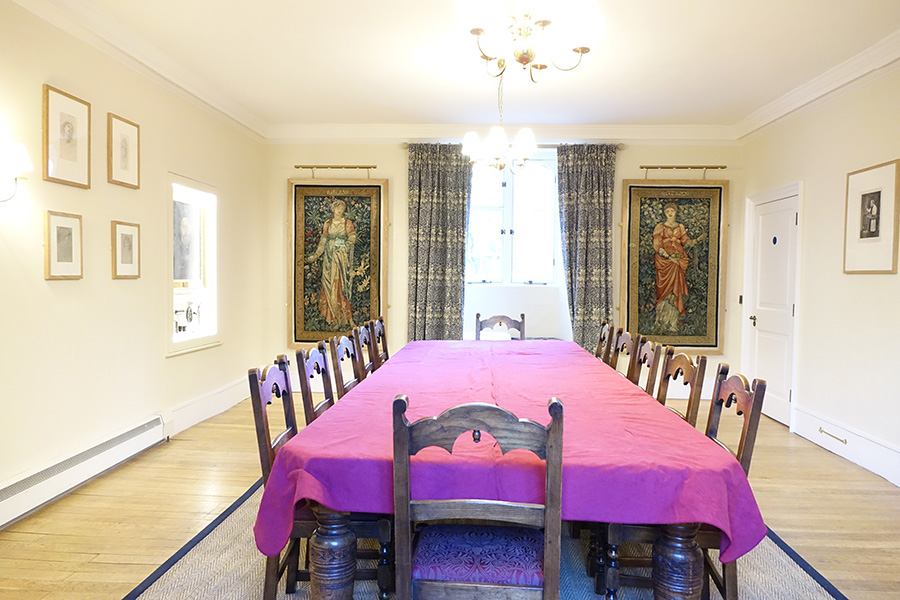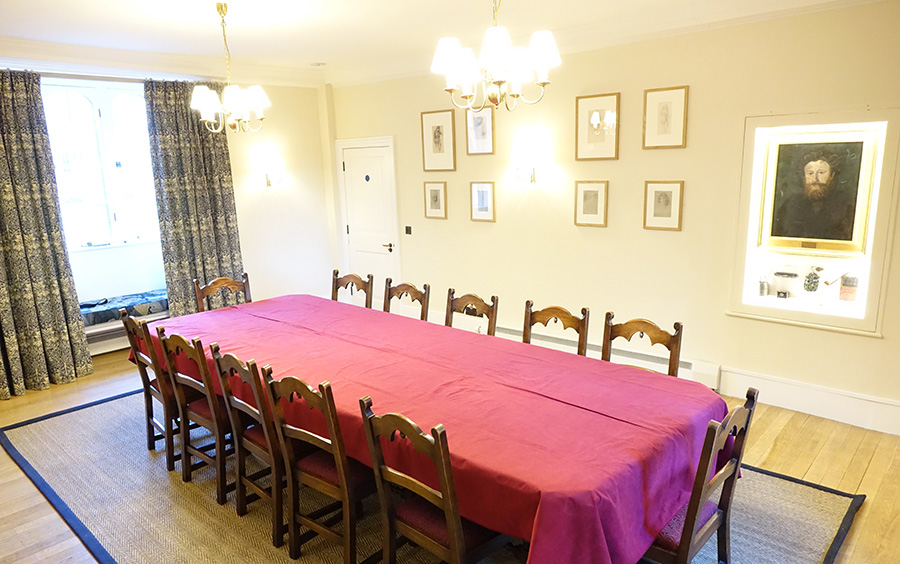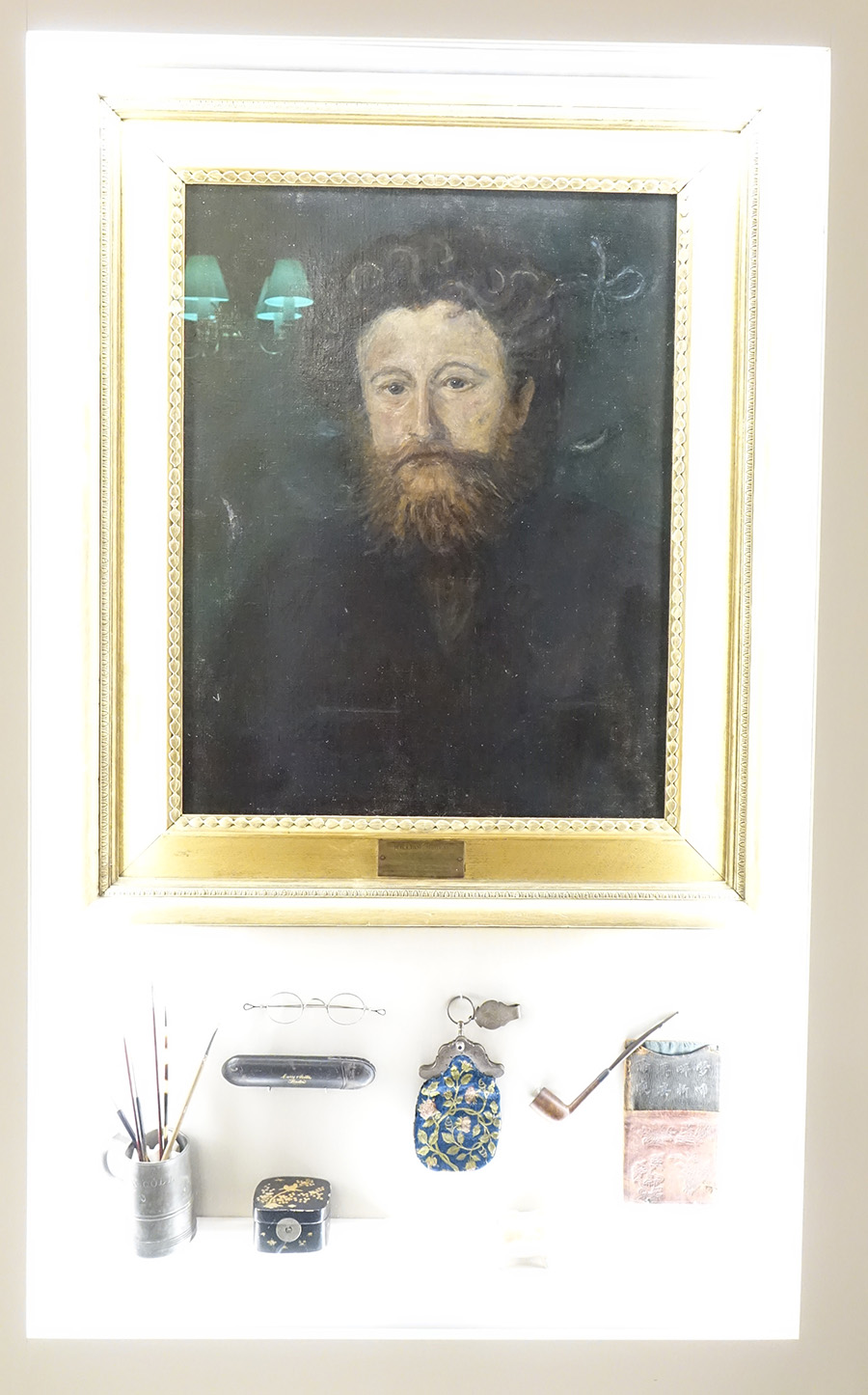Morris Room refurbished

The refurbished Morris Room with Burne-Jones’s tapestries Flora (left) and Pomona (right)
Thanks to the generosity of alumni and friends of Exeter College, the Morris Room has been refurbished and its contents cleaned and properly displayed.
Named for the 19th century artist, designer and poet William Morris, who came to Exeter to read Classics in 1852, the Morris Room is on the ground floor of Peryam Mansions and looks out to the Front Quad to the west and the Fellows’ Garden to the east. It has long been used as a teaching room and meeting room, but suffered from poor lighting and it couldn’t be said that the room did justice to Morris’s remarkable legacy. With the support of alumni and friends the College was able to develop a plan to refurbish the room completely, creating an inspiring teaching space that properly honours one of the College’s most celebrated alumni.
Exeter alumna and professional conservator Georgie Dennis (1988, Modern History) and National Trust curator Dr Wendy Monkhouse worked together to consider the design of the new room. They visited the Sanderson archive (home to Morris & Co’s archive of designs), looking through all his designs for fabric and wallpaper. Following this, they consulted several centres of Morris research: Kelmscott House in Hammersmith, home to the William Morris Society, the William Morris Gallery in Walthamstow, and Kelmscott Manor. Through speaking to these institutions, they developed a thorough appreciation of Morris’s approach to decorating. The result was the presentation of two alternative schemes for the redecoration; one more traditionally Morris and one a cleaner, more modern use of his fabrics and designs. Exeter’s governing body opted for the latter and, following the grant of Listed Building Consent for improving the fireplace and lighting, the design has been implemented. The new scheme uses Morris’s preferred combination of blue and red and the result is an elegant, well-lit room.
As well as wanting to create a teaching space that honours Morris’s design principles, the College was keen to display art by Morris and his friend and Exeter contemporary Edward Burne-Jones (1852, Theology), along with some of the ephemera once owned by Morris that is now in the College’s collection. Mrs Dennis and Dr Monkhouse explored the range of Morris and Burne-Jones works within College, with the help of the College librarian, Joanna Bowring, and archivist, Penelope Baker. These include a copy of G F Watts’s portrait of Morris, the contents of Morris’s desk at his death (nibbled brushes, spectacles, pipes etc), two important tapestries designed by Burne-Jones, Pomona and Flora, and several drawings by Burne-Jones. Treasures in the library include books bound by Morris as he experimented with bookbinding techniques in his spare time as an undergraduate, as well as Burne-Jones’s and Morris’s own copies of the magnificent Kelmscott Chaucer – still considered a masterpiece of book design today – and in the chapel hangs a tapestry designed by Morris and Burne-Jones, The Adoration of the Magi.
Some of these cannot be displayed for size or conservation reasons, but as part of the refurbishment some of the items in store have been brought out for display in a secure case. The tapestries of Flora and Pomona have been cleaned and reframed in special conservation-grade frames that will help preserve their colour and condition. Burne-Jones’s delicate pencil drawings have also been conserved and reframed in acid-free mounts and glazed with UV-filtering, low-reflective acrylic, in order to protect them for the future. All of these items are now properly lit so that fellows, students and visitors to College can enjoy them.


Some of William Morris’s personal effects, including his pipe, spectacles and brushes, are on display alongside a copy of G F Watts’s portrait of Morris, painted by Kenneth Robinson and presented to Exeter College by Nevill Coghill, Fellow in English from 1925 to 1957
